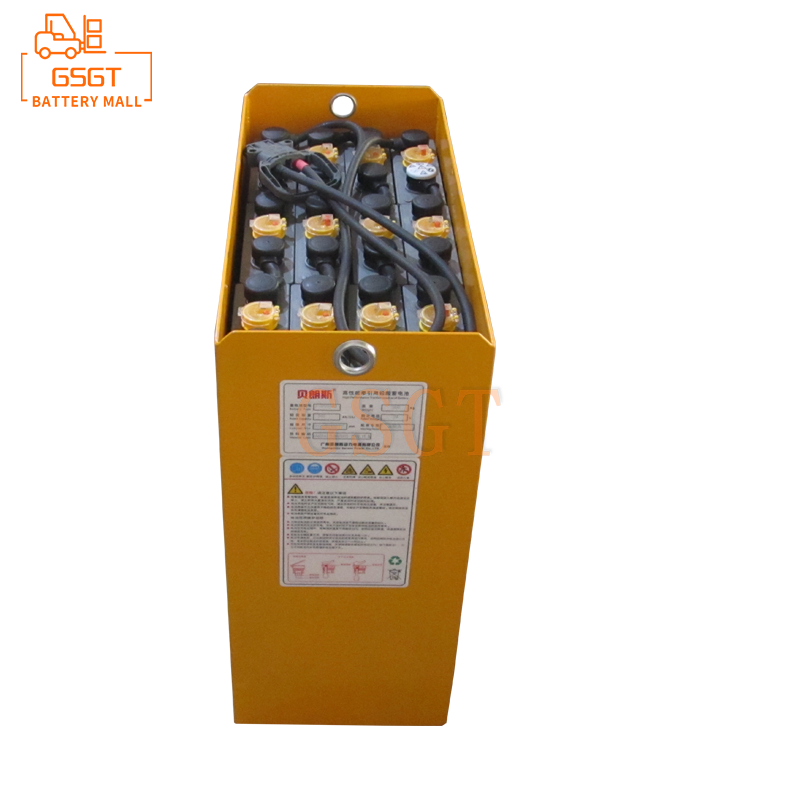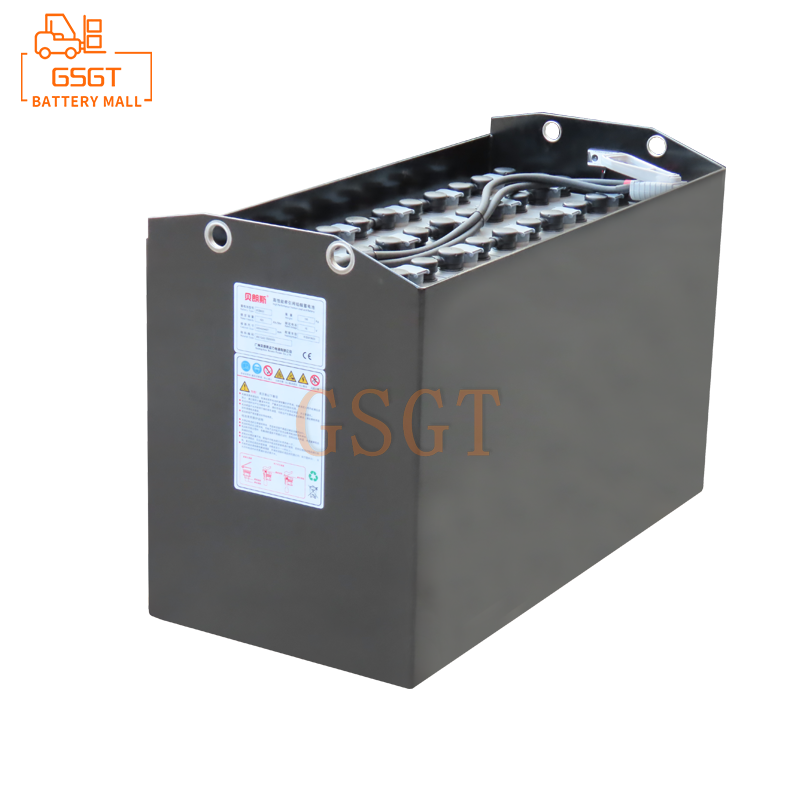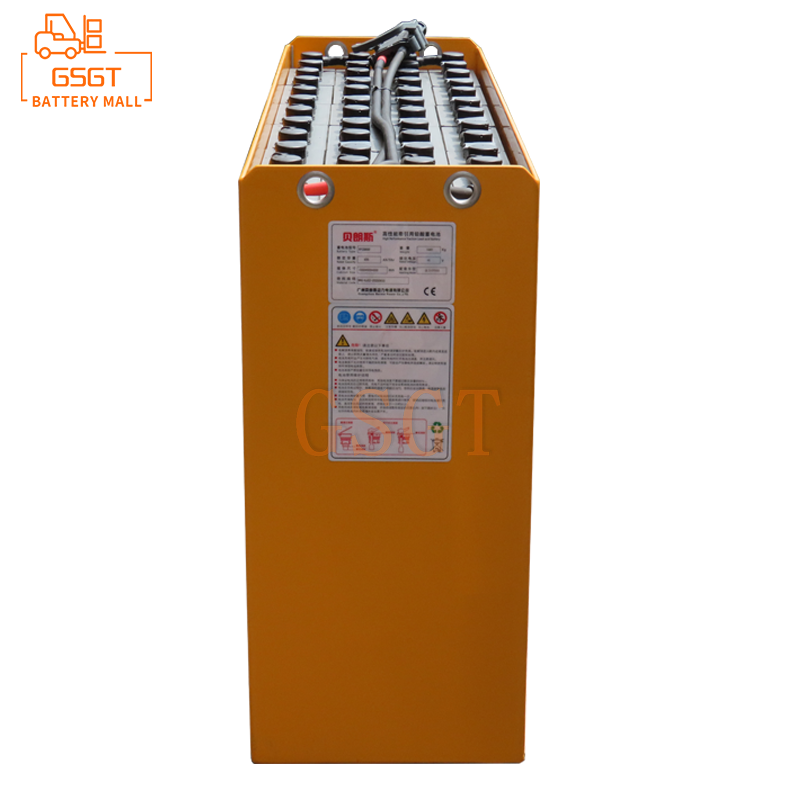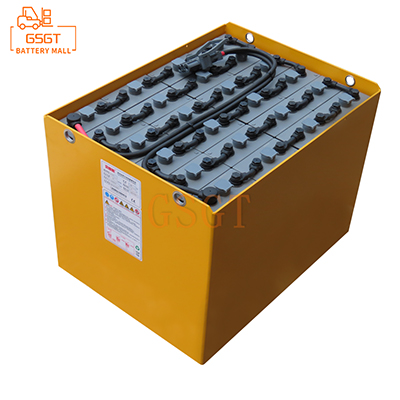Time:2025-04-24 09:56:12
Browse:612
Abstract
This article delves deeply into the charge and discharge curves of lead-acid batteries for forklifts. Through the analysis of the variation laws of parameters such as voltage, current, and capacity during the charging and discharging process, it clarifies the key characteristics and existing problems in the charging and discharging process. On this basis, explore and optimize the charging mode, aiming to improve the charging efficiency of lead-acid batteries, extend their service life, reduce usage costs, provide technical support for the efficient operation of forklifts, and also offer valuable references for the application of lead-acid batteries in the industrial field.
1. Introduction
Lead-acid batteries, as the main power source for forklifts, are widely used in the industrial field. The quality of its performance directly affects the working efficiency and operating cost of the forklift. The charging and discharging process is the core link in the use of lead-acid batteries. In-depth analysis of the charging and discharging curves can reveal the electrochemical change laws inside the battery and provide a theoretical basis for optimizing the charging mode. Optimizing the charging mode can not only increase the charging speed and reduce the downtime of the equipment, but also effectively extend the service life of the battery and lower the operating costs of enterprises. Therefore, the analysis of the charge and discharge curves of forklift lead-acid batteries and the exploration of optimizing the charging mode have important practical significance.
2. Analysis of the Charge and Discharge Curves of Forklift Lead-Acid Batteries
(1) Curve Analysis
1. Constant current charging stage
At the initial stage of charging, constant current charging is usually adopted. At this point, the charging current remains constant and the battery voltage gradually rises. As charging proceeds, the lead sulfate inside the battery continuously transforms into lead dioxide and spongy lead, and the concentration of sulfuric acid in the electrolyte gradually increases. At this stage, the battery has a strong acceptance capacity and a relatively high charging efficiency. However, as the battery voltage rises, the charging current will be subject to certain limitations to prevent overcharging of the battery, which could lead to overheating and damage to the plates.
2. Constant Voltage charging stage
When the battery voltage reaches a certain value, it enters the constant voltage charging stage. At this stage, the charging voltage remains constant while the charging current gradually decreases. This is because as the chemical reactions inside the battery proceed, the polarization phenomenon of the battery gradually intensifies, hindering the inflow of current. At this point, the battery mainly undergoes deep charging to further convert the remaining lead sulfate. When the charging current decreases to a certain extent, it is usually considered that the battery is basically fully charged and can enter the float charging stage.
3. Float charging stage
The main purpose of the float charging stage is to replenish the power consumed by the battery's self-discharge and maintain the battery in a fully charged state. The float voltage is relatively low and the charging current is very small, which can effectively prevent the battery from overcharging and ensure that the battery is always available.
(2) Discharge Curve Analysis
1. Initial Discharge stage
At the initial stage of discharge, the battery voltage is relatively stable and can output a large current to meet the power requirements of the forklift. At this point, the active substances inside the battery can participate in the chemical reaction relatively fully and output stable electrical energy. However, as the discharge proceeds, the concentration of sulfuric acid inside the battery gradually decreases, and the active substances on the plates are constantly consumed.
2. Mid-term discharge stage
After entering the mid-term discharge stage, the battery voltage begins to drop slowly, and the discharge current will also fluctuate with the changes in the load. The output power of the battery gradually decreases, but it can still maintain the normal operation of the forklift. At this stage, the performance of the battery gradually declines, and it is necessary to closely monitor the battery's condition to avoid over-discharge.
3.Final Discharge Stage
During the final discharge stage, the battery voltage drops rapidly. When the voltage drops to a certain extent, the forklift's power is obviously insufficient and it cannot work normally. Excessive discharge can lead to sulfation of the plates, seriously affecting the service life of the battery. Therefore, a reasonable discharge cut-off voltage must be set to protect the battery.
(3) Factors Affecting Charge and Discharge Curves
1. Temperature
Temperature has a significant influence on the charge-discharge curve of lead-acid batteries. When the temperature rises, the chemical reaction rate of the battery accelerates, its charging acceptance capacity enhances, the charge-discharge curve shifts upward as a whole, and the variation range of voltage and capacity within the same period of time increases. However, excessively high temperatures will accelerate the aging and water loss of batteries. Conversely, when the temperature drops, the chemical reaction rate of the battery slows down, the charging acceptance capacity decreases, the overall charge-discharge curve shifts downward, and the battery capacity and output power decrease.
2. Charging and Discharging current
Larger charging and discharging currents will intensify the polarization phenomenon inside the battery, causing the charging voltage to rise, the discharging voltage to drop, and the charging and discharging efficiency to decline. At the same time, high-current charging and discharging will also shorten the battery's service life. Although a smaller charging and discharging current can improve the charging and discharging efficiency, it will prolong the charging time and reduce the working efficiency.
3. Electrolyte density
The density of the electrolyte is closely related to the capacity and performance of the battery. When the density of the electrolyte is relatively high, the capacity of the battery is relatively large and the charge-discharge curve is relatively stable. However, an excessively high electrolyte density will accelerate the corrosion of the plates. When the density of the electrolyte is low, the battery capacity decreases and the charge-discharge curve fluctuates greatly.
3. Problems Existing in the Current Charging Mode
(1) Low charging efficiency
Although the traditional constant current - constant voltage charging mode is simple and easy to implement, during the entire charging process, the charging acceptance capacity of the battery at different stages is not fully considered. During the constant current charging stage, the charging acceptance capacity of the battery decreases in the later stage, resulting in a reduction in charging efficiency. During the constant voltage charging stage, the charging current decreases slowly, prolonging the charging time.
(2) Short battery life
Unreasonable charging modes can easily lead to overcharging or undercharging of the battery. Overcharging can cause the battery to heat up and lose water, accelerating the aging and damage of the plates. Undercharging will lead to sulfation of the plates, reducing the battery's capacity and service life. In addition, high-current charging can also cause irreversible damage to the battery.
(3) Energy Waste
Due to the low charging efficiency, a large amount of electrical energy is consumed during the charging process, resulting in energy waste. At the same time, a short battery life also means that batteries need to be replaced frequently, increasing resource consumption and costs.
4. Exploration of Optimizing Charging Modes
(1) Intelligent segmented charging mode
According to the characteristics of the battery at different charging stages, the charging process is divided into multiple stages, and different charging currents and voltages are adopted. At the initial stage of charging, a large constant current charging is adopted to rapidly increase the battery's capacity. When the battery voltage reaches a certain value, the charging current is gradually reduced and the pulse charging method is adopted to eliminate the polarization phenomenon of the battery and improve the charging efficiency. When approaching full charge, it enters the constant voltage charging stage and finally adopts low current float charging. By intelligently controlling the charging parameters, the charging needs of the battery at different stages can be fully met, improving the charging efficiency and battery life.
(2) Charging mode based on temperature compensation
Monitor the battery temperature in real time and automatically adjust the charging parameters according to the temperature changes. When the temperature rises, appropriately reduce the charging voltage and current to prevent the battery from overheating. When the temperature drops, increase the charging voltage and current to ensure that the battery can be charged normally. This charging mode based on temperature compensation can effectively reduce the impact of temperature on the charging and discharging performance of batteries, and improve the stability and service life of batteries.
(3) Adaptive Charging mode
The status of the battery is monitored in real time by using sensors, including parameters such as voltage, current, capacity and temperature. Through data analysis and algorithms, the charging mode and parameters are automatically adjusted to ensure that the charging process is always in the optimal state. For example, when a slight sulfation phenomenon is detected in the battery, the charging mode is automatically adjusted for restorative charging. When the battery is nearly fully charged, the charging current is automatically reduced to prevent overcharging.
5. Implementation and Verification of Optimized Charging Modes
(1) Implementation Method
By installing intelligent controllers and sensors in the lead-acid battery charging system of forklifts, real-time monitoring and control of the charging process can be achieved. The intelligent controller automatically adjusts the charging current and voltage according to the preset optimized charging mode algorithm. Meanwhile, a data collection and analysis system should be established to record and analyze various parameters during the charging process, so as to further optimize the charging mode.
(2) Verification Experiment
Multiple groups of forklift lead-acid batteries of the same specification were selected and divided into the control group and the experimental group. The control group adopted the traditional charging mode, while the experimental group adopted the optimized charging mode. Under the same usage conditions, multiple charge and discharge cycle experiments were conducted on the two groups of batteries, and parameters such as the charge and discharge time, capacity, and voltage of the batteries were recorded. By comparing and analyzing the experimental data, the effectiveness of the optimized charging mode is verified.
The experimental results show that after adopting the optimized charging mode, the charging time of the battery is shortened by approximately [X]%, the service life of the battery is prolonged by approximately [X]%, the charging efficiency is improved by approximately [X]%, and energy consumption is also reduced at the same time.
6. Conclusion
An in-depth analysis of the charge and discharge curves of forklift lead-acid batteries has enabled us to clearly understand the characteristics and influencing factors of the batteries during the charge and discharge process. In view of the problems existing in the current charging modes, the intelligent segmented charging mode, the charging mode based on temperature compensation and the adaptive charging mode explored have been verified through experiments to have significant advantages. These optimized charging modes can enhance charging efficiency, extend battery life, reduce energy consumption and usage costs, providing a better solution for the application of lead-acid batteries in forklifts. In future research, advanced sensor technology, communication technology and artificial intelligence algorithms can be further integrated to continuously improve and optimize the charging mode, promoting the efficient application of lead-acid batteries in the industrial field. Meanwhile, it also provides useful references and lessons for the research and application of other similar batteries.
The above article is for reference only. You can adjust and modify it according to your actual needs. If you have any other questions, please feel free to continue asking me.

$1105

$2450

$3810

$3405

MESSAGE
Professional And Efficient
Security
Affordable Price
Professional Services